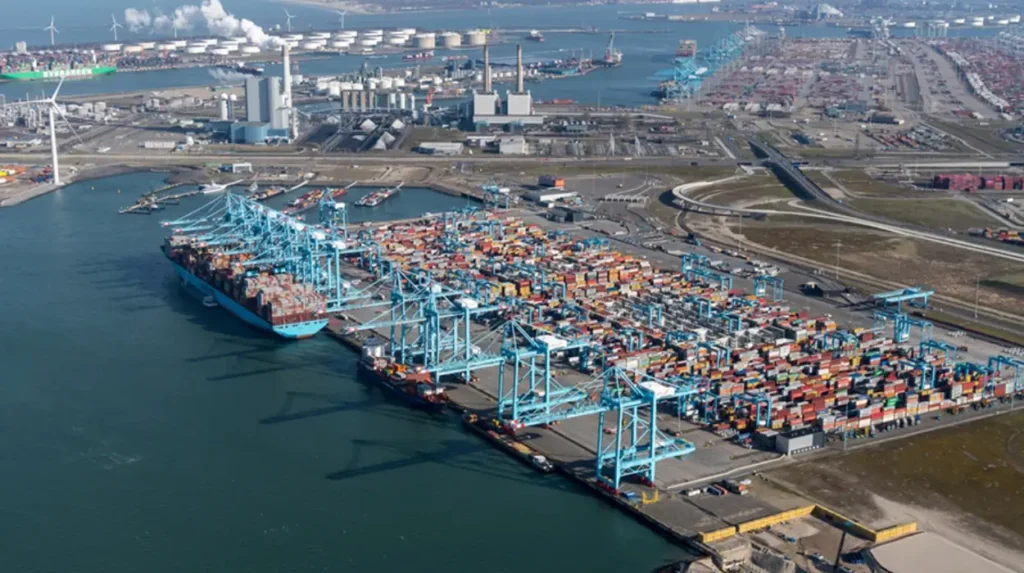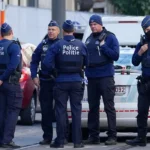European seaports have become critical battlegrounds in the fight against drug trafficking, corruption, and criminal violence, according to recent reports from authoritative sources including the European Union Drugs Agency (EUDA) and the World Customs Organization (WCO). These ports serve as the primary points of entry for illicit drugs into Europe, with staggering quantities of narcotics seized annually at or en route to these maritime hubs. The scale of trafficking, accompanied by widespread corruption among port workers and law enforcement personnel, severely compromises regional security and economic stability.
The Scale of Drug Trafficking in European Seaports
Recent data reveal that from January 2019 to June 2024, over 1,826 tonnes of illicit drugs were seized at or destined for European Union ports. Of this, 68% (about 1,244 tonnes) were intercepted directly at the ports themselves, underscoring the pivotal role these maritime gateways play in the narcotics trade. Cocaine dominates the trafficking scene, making up around 82% of the total seizures (approximately 1,487 tonnes), followed by significant quantities of cannabis resin, heroin, and smaller amounts of synthetic drugs such as captagon.
The ports most heavily targeted by traffickers include:
- Port of Antwerp (Belgium): Leading in seizures with roughly 443 tonnes of cocaine and around 8.1 tonnes of heroin intercepted during the period.
- Port of Rotterdam (Netherlands): Europe’s largest seaport, seizing about 181 tonnes of cocaine and 5 tonnes of heroin.
- Spanish Ports (Las Palmas de Gran Canaria and Huelva): These seized substantial amounts of cannabis resin, at 42 and 30 tonnes respectively.
Other ports across Europe, both large and medium-sized, have also reported significant drug seizures, indicating a broad geographical spread of trafficking operations beyond just the main hubs.
Corruption and Criminal Networks Within Ports
The sheer volume of drugs flowing through these maritime entry points reveals a high level of infiltration by organized criminal networks. There is strong evidence pointing to the corruption of port staff, including dock workers, customs officials, and law enforcement personnel, which facilitates the smuggling of wholesale amounts of drugs. The report highlights that large shipments averaging over 500 kilograms of cocaine and more than 1.3 tonnes of cannabis resin per seizure indicate systemic vulnerabilities in port security measures.
This corruption severely hampers anti-trafficking efforts and enables criminal groups to monopolize smuggling routes efficiently. The involvement of insiders allows for drugs to evade standard security procedures, often concealed within legitimate cargo shipments, making detection exceedingly difficult.
Violence and Security Risks at Seaports
Drug trafficking’s persistence at EU seaports is frequently accompanied by violence and intimidation, impacting not only those directly involved but also the surrounding communities and port operations. The conflicts among rival criminal factions and the coercive measures employed to maintain control over smuggling routes exacerbate public safety concerns within port cities.
Authorities report cases where violence linked to drug trafficking has disrupted port activities and endangered security personnel. These insecurities underscore how drug-related crime extends beyond smuggling into broader threats to regional stability and law enforcement capacity.
Impact on European Security and Economy
The drug-related corruption and criminal activities at European seaports have far-reaching implications beyond the immediate smuggling concerns. Economically, these illicit networks distort fair trade and undermine legal commercial operations, casting doubt over the transparency and integrity of port logistics. The scale of criminal penetration also burdens law enforcement agencies and judicial systems, complicating efforts to uphold the rule of law.
From a security standpoint, the infiltration of organized crime at points of entry into Europe poses a direct threat to national and regional stability. As most trafficked drugs eventually flood into national drug markets, the resulting societal problems—such as increased addiction rates, organized crime-related violence, and corruption—intensify. The persistent presence of drug syndicates in seaports represents a significant challenge for European Union-wide efforts to combat organized crime and maintain public safety.
European and International Responses
In response to these challenges, the European Union and its partners have intensified efforts to bolster port security and disrupt trafficking networks. Key strategies include:
- Enhanced Data Collection and Sharing: The establishment of the European Ports Alliance Public-Private Partnership encourages member ports to share detailed seizure data to better track trafficking trends and coordinate responses.
- Training and Resource Allocation: Law enforcement, port authorities, and customs officials receive specialized training and support to improve detection capabilities and reduce corruption risks.
- Expanding the Network of Cooperation: The report stresses the importance of increasing membership within the European Ports Alliance to cover more ports vulnerable to trafficking and thus ensure a more unified defense.
- Targeted Operations: Joint investigations and cross-border law enforcement cooperation aim to dismantle trafficking networks exploiting the ports.
Despite these initiatives, challenges remain. The complexity of port operations, combined with the lucrative nature of drug trafficking, means that continuous adaptation and vigilance are necessary to stay ahead of criminal networks.
Statements from Authorities
An EU official involved with port security highlighted the gravity of the situation by saying, “European seaports are the floodgates for illicit drugs entering our continent, and their security is paramount to safeguard our societies against the scourge of drug trafficking and related crime.”
A spokesperson for the World Customs Organization underscored the critical role of cooperation:
“Fighting drug trafficking at ports requires seamless collaboration across countries and sectors. Without joint action and data transparency, criminal networks will continue to exploit vulnerabilities.”
Local law enforcement officials have also warned of the pervasive risk posed by corruption within their ranks, emphasizing the need for stronger ethical standards and oversight mechanisms.
Drug-related corruption and crime in European seaports remain a profound and multifaceted threat, undermining the safety, economy, and governance of the region. The massive seizures of cocaine and other illicit substances underline the scale of trafficking, while the documented corruption points to systemic vulnerabilities that empower organized crime. Addressing this crisis demands sustained international cooperation, targeted legal reforms, and ongoing reinforcement of ethical and operational standards within ports and law enforcement.
The future of European security and the integrity of its maritime trade depend on the ability of authorities to close the gaps exploited by criminal networks, to foster trust and transparency among port stakeholders, and to maintain relentless pressure against drug traffickers and their facilitators.







